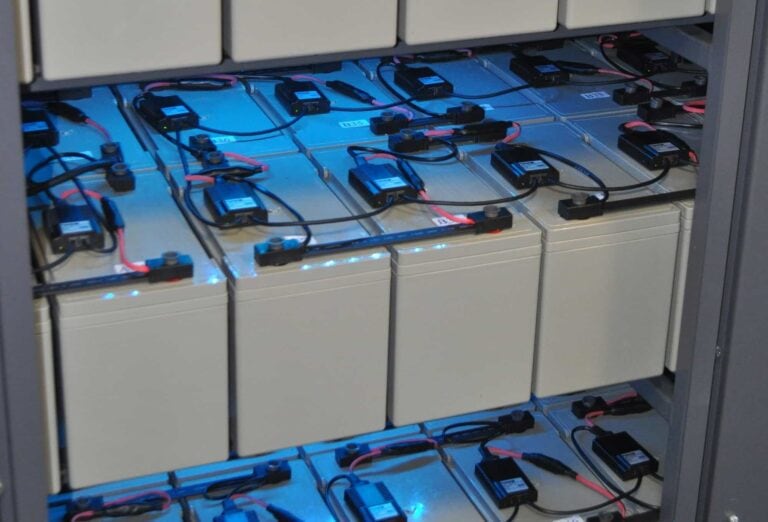Valve-Regulated Lead-Acid (VRLA) batteries and Absorbent Glass Mat (AGM) batteries are both types of lead-acid batteries, but they have distinct differences in their construction and operation.
- Construction:
- VRLA Battery: VRLA batteries are sealed batteries where the electrolyte (sulfuric acid solution) is immobilized either by being absorbed in a glass mat separator (AGM) or by being immobilized as a gel. These batteries have safety valves that release excess pressure and prevent the build-up of gases.
- AGM Battery: AGM batteries, also known as Absorbent Glass Mat batteries, are a type of VRLA battery where the electrolyte is absorbed into a glass mat separator. This mat is sandwiched between the lead plates inside the battery. The absorbed electrolyte in the glass mat allows for higher reliability and better performance under various conditions.
- Electrolyte Retention:
- VRLA Battery: In VRLA batteries, the electrolyte is immobilized to prevent spillage, allowing for maintenance-free operation. This makes VRLA batteries suitable for applications where regular maintenance is difficult or not feasible.
- AGM Battery: AGM batteries specifically use a glass mat separator to absorb and retain the electrolyte. This design prevents the electrolyte from spilling even if the battery is damaged or tipped over, making AGM batteries ideal for applications where safety and reliability are paramount.
- Performance:
- VRLA Battery: VRLA batteries, including AGM batteries, offer high energy density, low self-discharge rates, and excellent performance in deep-cycle applications. They are commonly used in applications such as UPS systems, telecommunications, and renewable energy storage.
- AGM Battery: AGM batteries are known for their superior performance in high-demand applications, such as starting, lighting, and ignition (SLI) in vehicles, as well as in marine and recreational vehicles. They can deliver high bursts of energy and recharge quickly, making them suitable for applications where rapid discharge and recharge cycles are required.
- Applications:
- VRLA Battery: VRLA batteries, including AGM batteries, find applications in a wide range of industries, including telecommunications, uninterruptible power supplies (UPS), emergency lighting, renewable energy storage, and more.
- AGM Battery: AGM batteries are commonly used in automotive applications, including cars, trucks, motorcycles, and other vehicles, as well as in marine and recreational vehicles where vibration resistance and reliability are important.
In summary, while both VRLA and AGM batteries are types of sealed lead-acid batteries, AGM batteries specifically use a glass mat separator to absorb and retain the electrolyte, offering enhanced performance and safety features compared to other VRLA designs.


